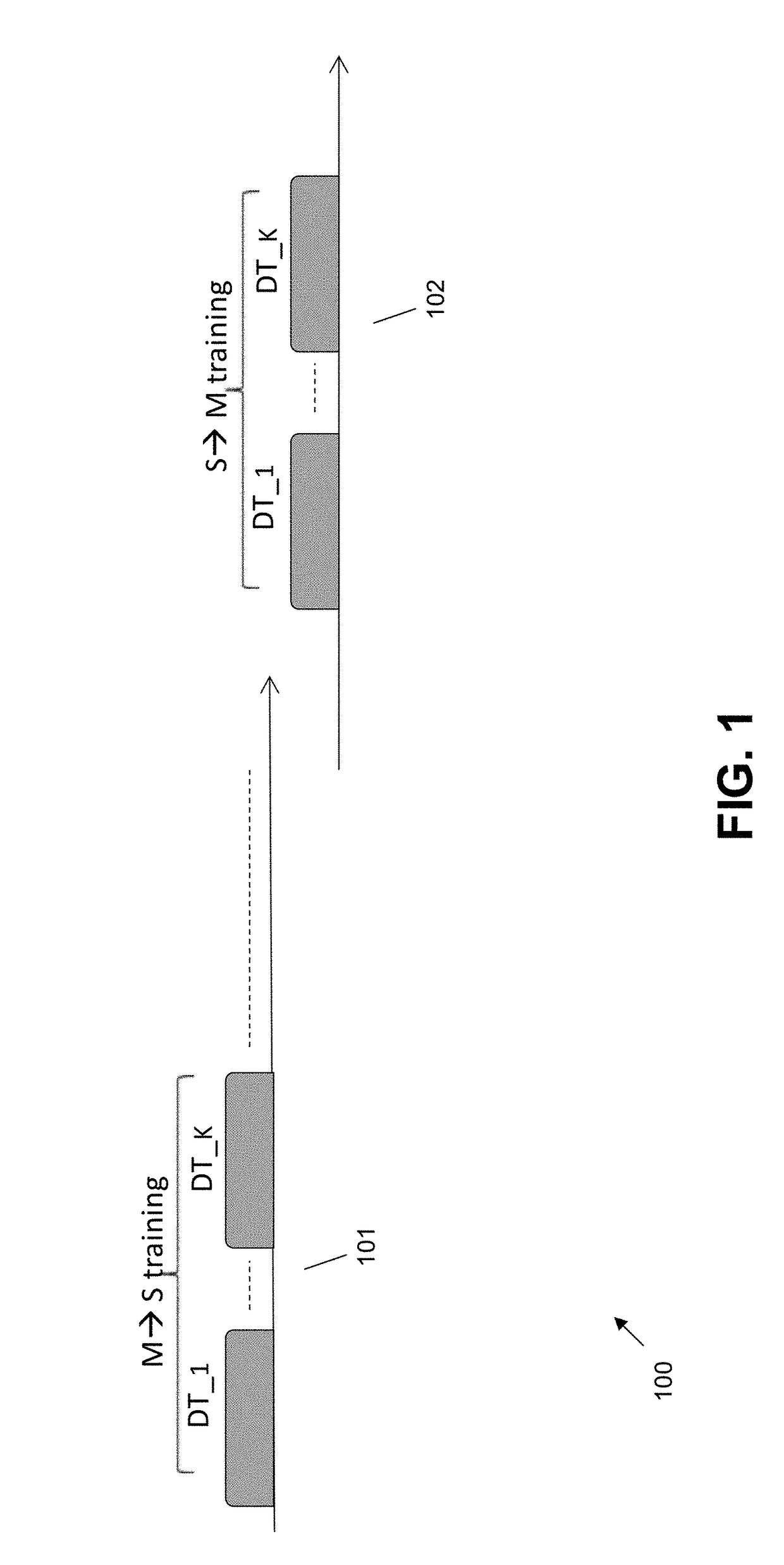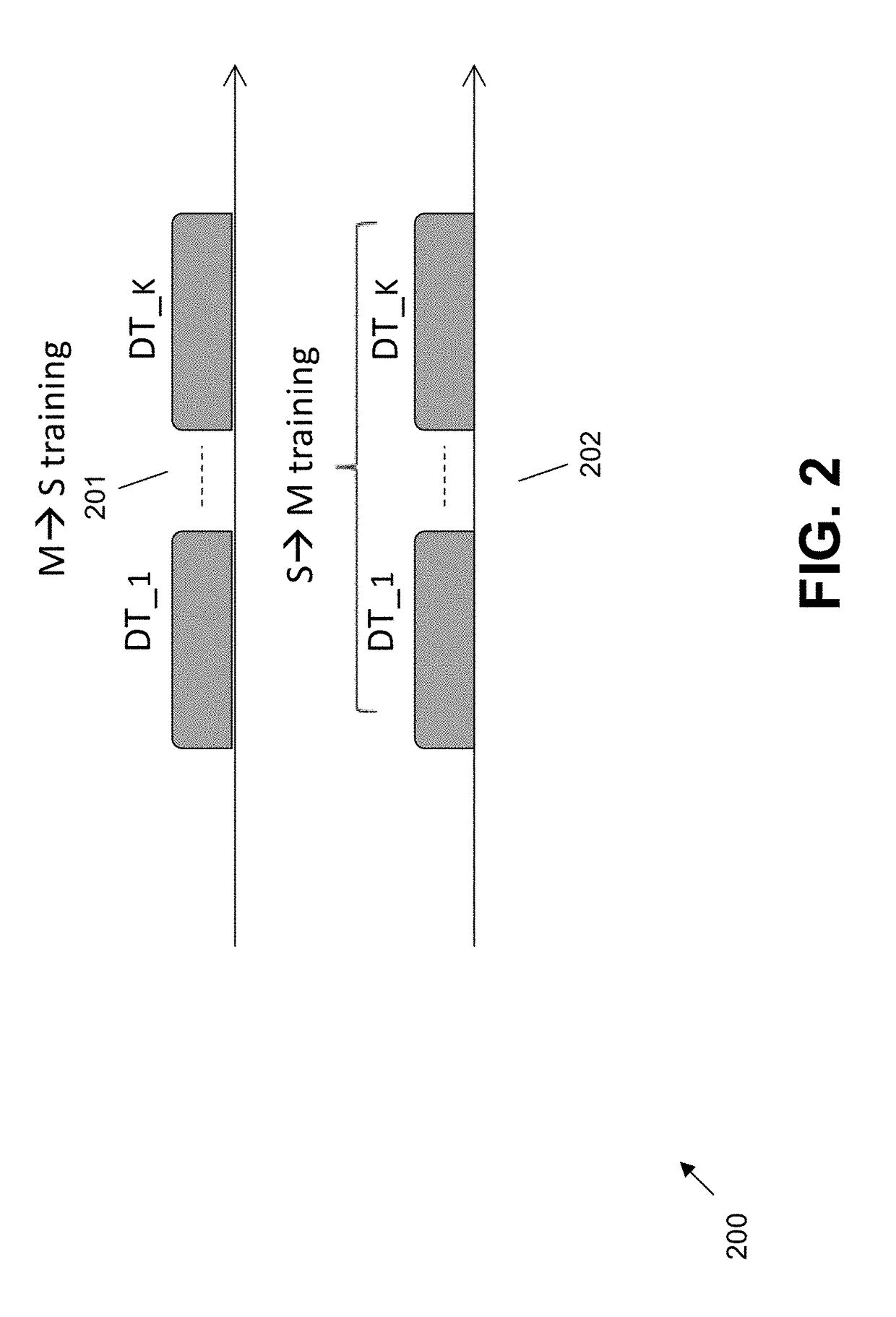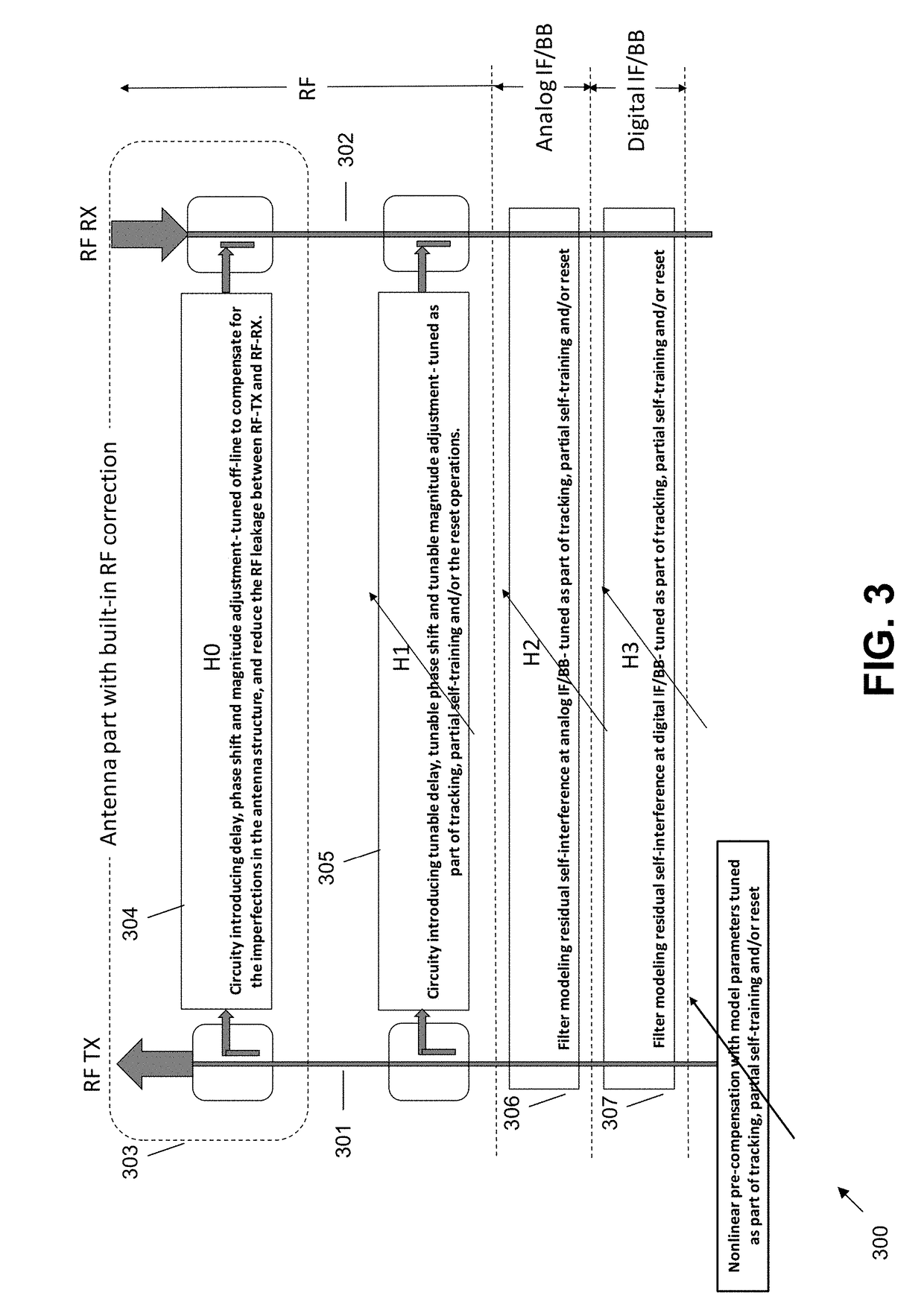Methods for training of full-duplex wireless systems
a full-duplex wireless and wireless system technology, applied in the direction of transmission monitoring, dot-and-dash transmission apparatus, electrical apparatus, etc., can solve the problems of limited effect of full-duplex link in these earlier applications, difficult implementation, and inability to transmit and receive simultaneously over the entire frequency band, so as to facilitate wireless networking and facilitate detection
- Summary
- Abstract
- Description
- Claims
- Application Information
AI Technical Summary
Benefits of technology
Problems solved by technology
Method used
Image
Examples
Embodiment Construction
[0018]A detailed description of illustrative embodiments will now be provided with reference to the various Figures. Although this description provides detailed examples of possible implementations, it should be noted that the provided details are intended to be by way of example and in no way limit the scope of the application.
[0019]To cancel the self-interference, a corrective signal (CS) is generated from the Transmit Signal (TS) and added to the received signal to cancel the self-interference. Such a correction can be performed in the analog domain, i.e., at the RF and / or at an Analog IF (AIF) and / or at Analog BaseBand (ABB). It can be also performed at the digital domain, e.g., at the Digital IF (DIF) and / or at the digital BaseBand (DBB). A combination of “analog correction” and “digital correction” is possible as well.
[0020]To form a corrective signal, a model is used to express the self-interference signal in terms of the transmitted signal. A good portion of the model can be...
PUM
 Login to View More
Login to View More Abstract
Description
Claims
Application Information
 Login to View More
Login to View More - R&D
- Intellectual Property
- Life Sciences
- Materials
- Tech Scout
- Unparalleled Data Quality
- Higher Quality Content
- 60% Fewer Hallucinations
Browse by: Latest US Patents, China's latest patents, Technical Efficacy Thesaurus, Application Domain, Technology Topic, Popular Technical Reports.
© 2025 PatSnap. All rights reserved.Legal|Privacy policy|Modern Slavery Act Transparency Statement|Sitemap|About US| Contact US: help@patsnap.com



